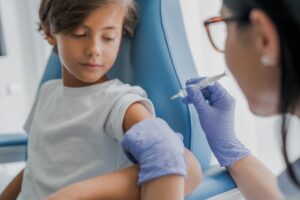
By DAVID BOYLE
The Department of Education & Early Development recently posted the scores of every Alaska public K-12 school which showed little progress for most districts.
The AK STAR, Alaska System of Academic Readiness, shows how our students are doing using Alaska’s standards. These standards now closely align with the National Achievement of Educational Progress test. Now it is much easier for Alaskans to compare our students to other states’ students.
The AK STAR was first given to students in the 2022-23 school year. Thus, we can compare the recent 2023-24 test results to the prior year’s test results to determine if our students have made any progress in reading and math in tests given to students in grades 3 through 9.
Statewide, our students in all grades did slightly worse in reading and math in 2024 than in the prior year.

The greatest decrease in the statewide “All Grades” is in math proficiency — a decrease of 1.4 percentage points.
To get a better picture, one must drill down into the data and compare cohort groups of students, comparing the same group of students (2023) moving from one grade (3rd) to the next (4th).
Let’s look at the results for the 2023 third grade students compared to the same group of students in the 2024 fourth grade and see how they fared.

The student cohort improved 3.5 percentage points in reading — a significant increase. But the cohort did not do as well in the math scores, showing a slight decrease.
Let’s look at how our “Big 5” schools did on the AK STAR test. Once again, to determine how well students fared we need to look at student cohorts, the 2023 third graders compared to the 2024 fourth graders to be sure we are measuring the same students.

Note that Anchorage increased its reading score by 4 percentage points. The MatSu district increased its reading score by 6.3 percentage points. Kenai district student cohort decreased in its reading score by 2.8 percentage points.
The Fairbanks district student cohort increased its reading score by 6.6 percentage points. But notice that Fairbanks 3rd grade students had the lowest reading scores of the Big 5 schools in 2023.
Juneau student cohort improved a little in reading but it decreased in math proficiency by a mere 0.8%.
Skagway School District won the trophy for scoring first in AK STAR test scores when looking at the 3rd grade and fourth grade cohorts.

Some of the higher scores may be attributed to a much smaller school with only 152 students. The per student cost in Skagway is $28,000.
But the Pelican City School District is a much smaller district than Skagway. It has 12 students at a cost of $61,092 per pupil. In 2023 55.6% of the students were proficient in reading. However, in 2024 only 30% of its students were proficient in reading. So, maybe one of the students changed to homeschool or moved. So, in this case, size doesn’t matter.
The Yupiit School District comes in last in the AK STAR scoring. The only data available shows that less than 5% of the students are proficient in reading and math in both 2023 and 2024. There are 471 students at a cost of $37,219 (local, state and federal) per pupil. Sadly, only one student in the entire school is proficient in reading. We must ask, “where is the money going?”
Hopefully, the Alaska Reads Act will help improve the reading skills of all our K-12 students.
Here’s a snapshot of some of Alaska’s charter schools where parents have much more control over curriculum, principal, and they are the school board.
At the Eagle Charter Academy in Anchorage the K-8 students are 77% proficient in reading and 80% are proficient in math. There are 189 students at a cost of $16,154 per student.
The American Charter Academy (MatSu District) has 186 students at a cost of $16,900 per student. Fifty-six percent of its students are proficient in reading and 72% are proficient in math.
The Aquarian Charter School in Anchorage has 390 students at a cost of $15,600 per student. More than 69% of its students are proficient in reading and 69% are proficient in math.
Some Alaska students are doing well in reading and math. Is it the water in Skagway? Is it the size of the school? Is it the spending per pupil?
Maybe Skagway children are products of the Lake Wobegon effect, “Where all the women are strong, all the men are good-looking, and the children are above average.”
The number show that it is not how much money we spend on K12 education. The charter schools, where parents are more fully engaged, may show the real reasons for improved student achievement. Parents run the school board, determine the curriculum, choose the principal who aligns with parents’ values, and through the principal, parents choose the best teachers.
Parents are responsible for running the charter schools.
That is why we need more charter schools that parents can choose for their children. We need more charter schools so all Alaska children can read at grade level. We need more charter schools so all Alaskan children can be proficient in math.
To increase the number of charter schools, we need more authorizers than can approve charters. This would release the stranglehold the school districts have on charter schools.
These results for our brick-and-mortar schools demonstrate parents must have more choice to see their children succeed. The future of Alaska depends upon it.
We cannot afford to have nearly 70% of our Alaska children nearly illiterate.

![Body temperature check, prevent virus Concepts in preventing contagious diseases. Corona virus [Covid-19] . social distancing concept.Operator Check Fever by Digital Thermometer Visitor](https://ak4pf.org/wp-content/uploads/2025/03/business-woman-covid-19-2024-10-18-05-28-48-utc-150x150.jpg)





![Body temperature check, prevent virus Concepts in preventing contagious diseases. Corona virus [Covid-19] . social distancing concept.Operator Check Fever by Digital Thermometer Visitor](https://ak4pf.org/wp-content/uploads/2025/03/business-woman-covid-19-2024-10-18-05-28-48-utc-300x196.jpg)




